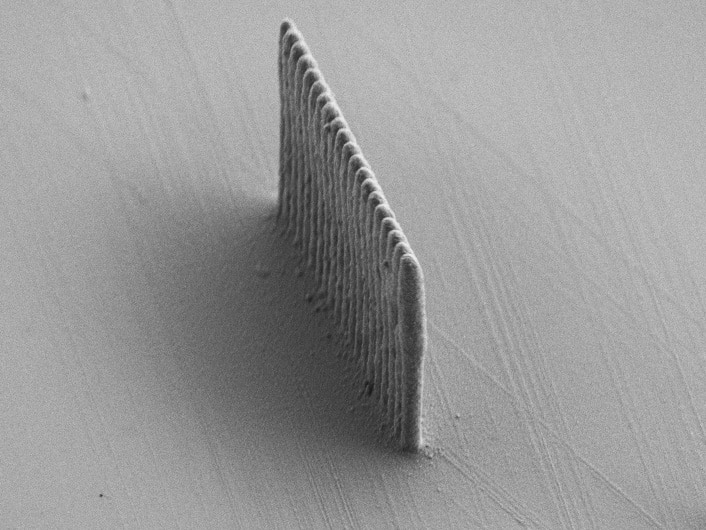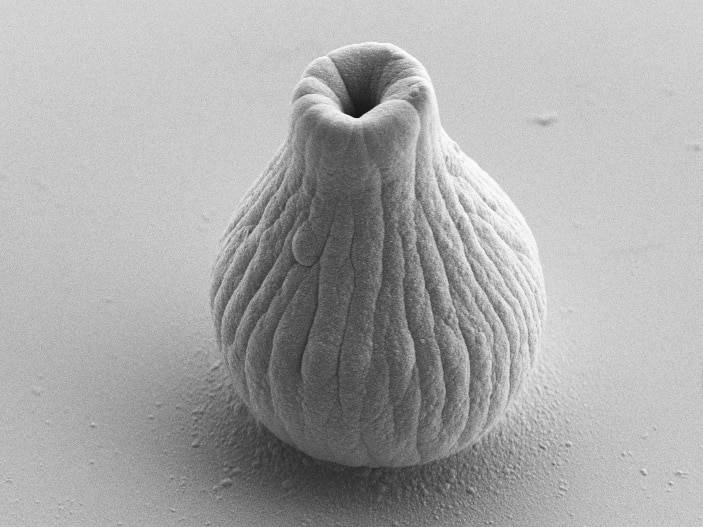A new 3D microprinting process allows scientists to easily manufacture tiny, complex metal components.
The copper objects shown in these microscope images have a width of 15 to 35 micrometers. For comparison, a human hair is approximately 50 micrometers wide.






The team at ETH Zurich originally developed the technique called FluidFM for biological research, but they’ve fine-tuned it create these simple objects in a single step. They think one day it could be used to manufacture complex components or microtools.
In most existing 3D microprinting processes, such overhanging structures can be achieved only through a workaround: during the printing process, a stencil manufactured beforehand is used as a placeholder under the overhang that is to be printed. The template must be removed once printing is complete.
In the new technique developed by doctoral student Luca Hirt, the print head can also print sideways. This means that overhangs can be printed without templates.
At the heart of this system is a moveable micropipette mounted on a leaf spring, which can be positioned extremely precisely
HOW IT WORKS
A droplet of liquid is placed on a base plate made of gold. The tip of the micropipette penetrates the droplet and acts as a print head. A copper sulphate solution flows slowly and steadily through the pipette.
Using an electrode, the scientists apply a voltage between the droplet and the substrate, causing a chemical reaction under the pipette aperture. The copper sulphate emerging from the pipette reacts to form solid copper, which is deposited on the base plate as a tiny 3D pixel.
Using a computer to control the movement of the micropipette, the researchers can print 3D objects pixel by pixel and layer by layer. The spatial resolution of this process depends on the size of the pipette’s aperture, which in turn determines the size of the copper deposits.
At present, the scientists can produce individual 3D pixels with diameters ranging from 800 nanometers to more than five micrometers, and can combine these to form larger 3D objects.
In an initial feasibility study, published in Advanced Materials, they created a range of spectacular microscopic objects that consist of pure, nonporous copper and are mechanically stable. A particularly impressive object consists of three nested microspirals, which the researchers manufactured in a single step and without using a template.
“This method can be used to print not only copper but also other metals,” says Tomaso Zambelli, associate lecturer, who says it may even be suitable for 3D printing with polymers and composite materials.
The scientists have submitted a patent application for the method.
Source: ETH Zurich



